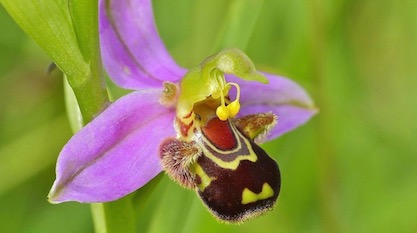 Evolution
Evolution
 Life Sciences
Life Sciences
Sex Chromosomes Refuse to Fit One Origins Theory

Doesn’t everyone like sex? Of course they do — and the designer made the sexual organs of angiosperms, namely, flowers, to be the most spectacularly beautiful structures in biology, so he evidently likes sex too. An invited review (open access) in Genome Biology and Evolution explores the “incredible diversity of sex chromosome systems,” but especially how their evolutionary origins refuse to fit any one theory. See, “Sex chromosome evolution: So many exceptions to the rules.”
From the abstract:
Despite many convergent genomic patterns exhibited by independently evolved sex chromosome systems, and many case studies supporting these theoretical predictions, emerging data provide numerous interesting exceptions to these long-standing theories, and suggest that the remarkable diversity of sex chromosomes is matched by a similar diversity in their evolution.
Photo: Ophrys apifera, also known as the “bee orchid,” by Bernard DUPONT from FRANCE / CC BY-SA.
